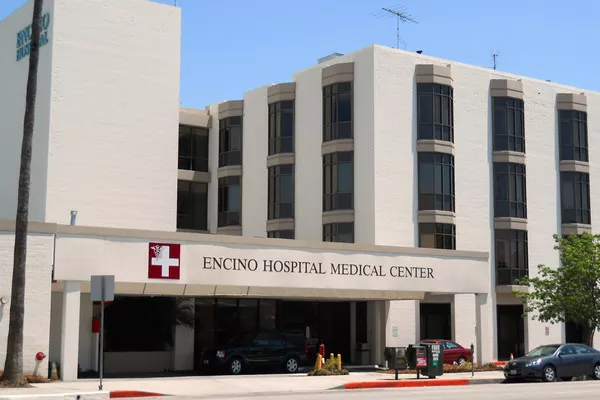In the realm of men’s health, an enlarged prostate, or benign prostatic hyperplasia (BPH), is a common concern that often becomes more prevalent with age. As men seek effective treatments for BPH, hormone therapy has emerged as a potential solution. This article explores the intricacies of hormone therapy and its role in addressing an enlarged prostate, delving into the science, benefits, risks, and considerations associated with this treatment.
The Basics of an Enlarged Prostate
Before delving into hormone therapy, it’s crucial to understand the basics of an enlarged prostate. The prostate is a small, walnut-shaped gland that surrounds the urethra in men. As men age, the prostate often undergoes a natural growth process. However, in some cases, this growth can lead to an enlarged prostate, causing various urinary symptoms.
Common symptoms of an enlarged prostate include frequent urination, difficulty starting or maintaining a steady stream, a weak urine stream, and a feeling of incomplete emptying of the bladder. While these symptoms are not typically associated with prostate cancer, they can significantly impact a man’s quality of life.
See Also:10 Natural Prostate Shrinking Supplements
Hormone Therapy: A Potential Solution
Hormone therapy, also known as androgen deprivation therapy (ADT), is a medical intervention that aims to alter the levels of male hormones, particularly testosterone, to manage conditions like prostate enlargement. Testosterone, the primary male sex hormone, plays a crucial role in the growth and function of the prostate.
The idea behind hormone therapy for an enlarged prostate is to reduce testosterone levels, thereby slowing down the growth of the prostate. By inhibiting the effects of testosterone, it is believed that hormone therapy can alleviate symptoms associated with BPH and, in some cases, shrink the prostate.
How Hormone Therapy Works
Hormone therapy typically involves the use of medications called anti-androgens or luteinizing hormone-releasing hormone (LHRH) agonists. These medications work in different ways to achieve the common goal of reducing testosterone levels in the body.
Anti-androgens block the action of testosterone at the cellular level, preventing it from stimulating prostate growth. On the other hand, LHRH agonists suppress the production of testosterone by the testicles. Both approaches aim to create an environment in which the prostate is less stimulated to grow, potentially leading to a reduction in its size.
Benefits of Hormone Therapy for an Enlarged Prostate
Symptom Relief: One of the primary benefits of hormone therapy is the relief it can provide from the bothersome symptoms associated with an enlarged prostate. Reduced prostate size often correlates with improvements in urinary function.
Prevention of Complications: By addressing an enlarged prostate, hormone therapy may help prevent complications such as urinary retention and the need for surgical interventions.
Adjunct to Other Treatments: Hormone therapy can be used in conjunction with other treatments for BPH, such as alpha-blockers or 5-alpha reductase inhibitors, to enhance their effectiveness.
Risks and Considerations
While hormone therapy can offer relief, it is not without risks and considerations. Some key factors to keep in mind include:
Side Effects: Hormone therapy can cause side effects, including fatigue, hot flashes, decreased libido, and potential bone density loss. These side effects should be carefully weighed against the benefits of treatment.
Limited Duration of Effectiveness: The effectiveness of hormone therapy is often temporary. Prostate size may decrease initially, but over time, the prostate may adapt, and symptoms may return.
Not a Cure: Hormone therapy does not cure an enlarged prostate. It provides symptomatic relief and may slow down the growth, but the underlying condition persists.
Impact on Bone Health: Prolonged use of hormone therapy may have implications for bone health, potentially leading to an increased risk of fractures. Regular monitoring and appropriate interventions can mitigate these risks.
Patient Selection and Monitoring
Before initiating hormone therapy, healthcare providers carefully evaluate patients to determine the appropriateness of this treatment. Factors such as age, overall health, and the severity of symptoms are taken into consideration. Additionally, regular monitoring is essential to assess the treatment’s effectiveness and manage any potential side effects.
Conclusion: A Considered Approach to Men’s Health
In conclusion, hormone therapy can be a valuable tool in managing an enlarged prostate, offering relief from symptoms and potentially reducing prostate size. However, it is not a one-size-fits-all solution, and careful consideration of the risks and benefits is crucial. Patients and healthcare providers should engage in thorough discussions to make informed decisions about the most suitable treatment approach for individual cases.
As research continues to uncover new insights into hormone therapy and its impact on prostate health, the medical community remains dedicated to refining treatment strategies and improving outcomes for men facing the challenges of an enlarged prostate. By staying informed and fostering open communication with healthcare providers, individuals can navigate the complexities of men’s health with confidence and proactive decision-making.
Related Topics:
What Does Hims Do for a Man?
What Is Mood Tablets for Male: A Quick Guide
Top 6 Multivitamins for Men in 2024


